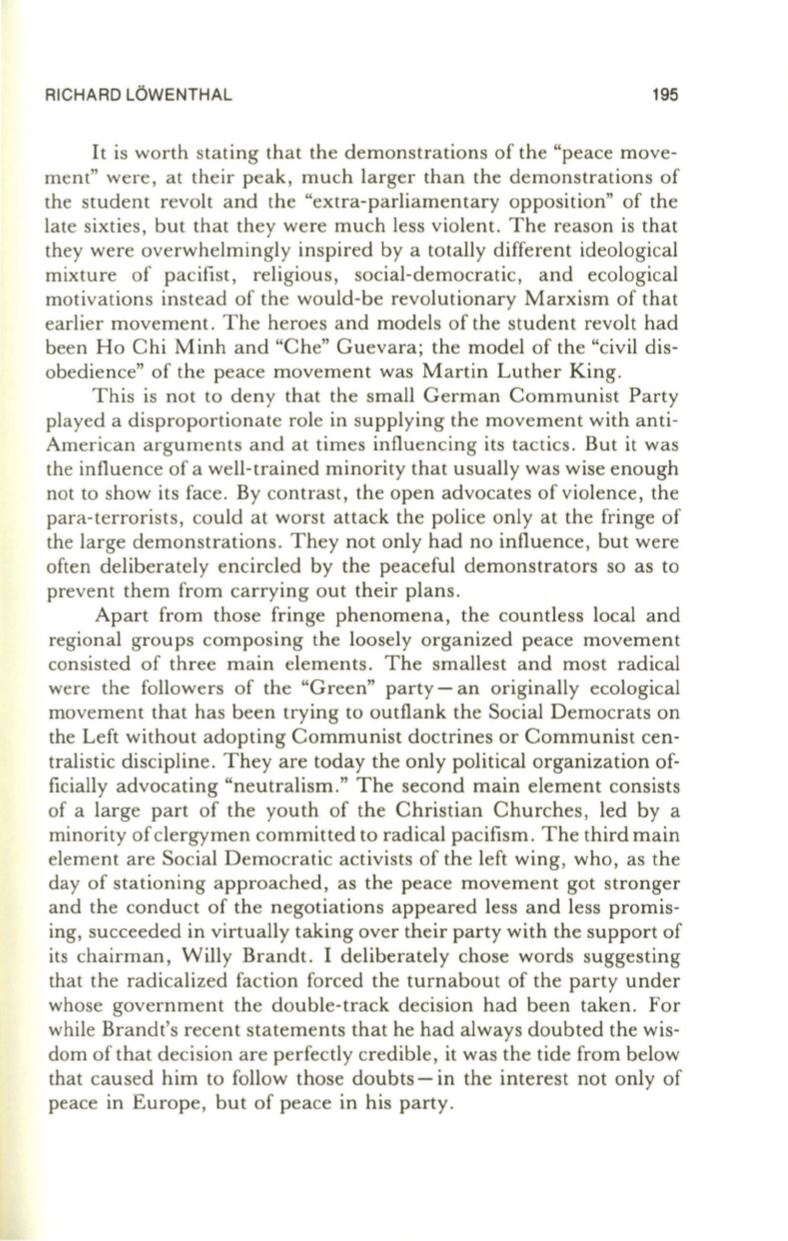
RICHARD LOWENTHAL
195
It is worth stating that the demonstrations of the "peace move–
ment" were , at their peak, much larger than the demonstrations of
the student revolt and the "extra-parliamentary opposition" of the
late sixties , but that they were much less violent. The reason is that
they were overwhelmingly inspired by a totally different ideological
mixture of pacifist, religious, social-democratic, and ecological
motivations instead of the would-be revolutionary Marxism of that
earlier movement. The heroes and models of the student revolt had
been Ho Chi Minh and "Che" Guevara; the model of the "civil dis–
obedience" of the peace movement was Martin Luther King .
This is not to deny that the small German Communist Party
played a disproportionate role in supplying the movement with anti–
American arguments and at times influencing its tactics . But it was
the influence of a well-trained minority that usually was wise enough
not to show its face . By contrast, the open advocates of violence, the
para-terrorists , could at worst attack the police only at the fringe of
the large demonstrations. They not only had no influence, but were
often deliberately encircled by the peaceful demonstrators so as to
prevent them from carrying out their plans .
Apart from those fringe phenomena, the countless local and
regional groups composing the loosely organized peace movement
consisted of three main elements. The smallest and most radical
were the followers of the "Green" party - an originally ecological
movement that has been trying to outflank the Social Democrats on
the Left without adopting Communist doctrines or Communist cen–
tralistic discipline. They are today the only political organization of–
ficially advocating "neutralism." The second main element consists
of a large part of the youth of the Christian Churches, led by a
minority of clergymen committed to radical pacifism . The third main
element are Social Democratic activists of the left wing, who, as the
day of stationing approached, as the peace movement got stronger
and the conduct of the negotiations appeared less and less promis–
ing, succeeded in virtually taking over their party with the support of
its chairman, Willy Brandt. I deliberately chose words suggesting
that the radicalized faction forced the turnabout of the party under
whose government the double-track decision had been taken . For
while Brandt's recent statements that he had always doubted the wis–
dom of that decision are perfectly credible, it was the tide from below
that caused him to follow those doubts - in the interest not only of
peace in Europe , but of peace in his party.


